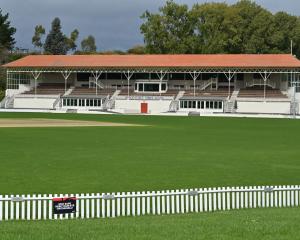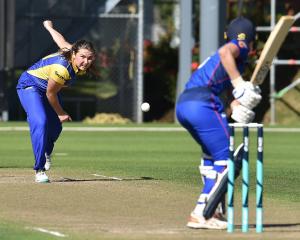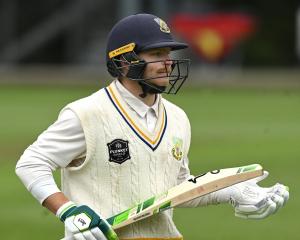However, the future of the DRS remains in doubt, with two major test nations refusing to implement the system.
The DRS, which allows captains to challenge umpires' decisions by referring them to a television official, was meant to be implemented from October 1 after the International Cricket Council trialled the system worldwide and approved it.
South Africa followed India's lead this week and decided against adopting the system for its series against England.
But NZC chief executive Justin Vaughan said an agreement was reached late yesterday afternoon with Dunedin-based company Animation Research Limited to supply its Virtual Eye ball-tracking technology.
"This will be the first series in the international calendar to use the new DRS - it's an important advance for international cricket," Vaughan said in a statement.
"We're also delighted that a Kiwi company will be the first to pioneer the ball-tracking technology."
However, only hours earlier Vaughan told the Otago Daily Times he was uncertain whether the DRS would be used in the series.
"It is a difficult issue. At the last ICC meeting, it was really thrown back to each individual board to try and make arrangements to implement the DRS.
"Generally, there is an acceptance in terms of the technology being used, but at the same time a realisation that the boards don't want to pay too much money."
Some of the world's cricketing boards, it seems, want to pass those costs on to either the broadcaster or the company suppling the technology.
"The addition of the DRS adds value for the broadcasters and makes the whole package more attractive . . . but if the system is going to cost individual boards large amounts of money, then it is probably not worth doing."
The DRS was trialled in Dunedin last year during the first test against the West Indies.
It allows the third umpire to use ball-tracking or other available technology to review decisions.
Each team is allowed to make two unsuccessful review requests per innings.
The third umpire then has the advantage of being able to view the footage and provide the on-field umpire with assistance in making, hopefully, a better decision.
Otago skipper Craig Cumming missed a golden opportunity to impress the selectors when he was dismissed early in the New Zealand Invitation XI innings against Pakistan at the Queenstown Event Centre yesterday.
He was surprised by a rising delivery and fended it into the gully as his side was bowled out for 234.
Auckland wicketkeeper-batsman Reece Young top-scored with 75 and looked in good touch.
Black Caps all-rounder James Franklin also batted nicely, scoring 43.
But he injured his left knee while batting and is unlikely to take the field today.
His injury will be reassessed today.
Pakistan will resume day two of the three-day match on 14 for one.












